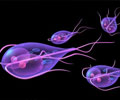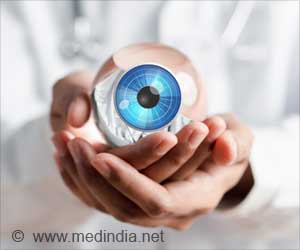
A team at the University of Burgos have now developed a technique for detecting the presence of this dangerous metal in water "in a cheap, quick and in situ way," as explained to SINC by José Miguel García, one of the authors of the study. Details have been published in the 'Analytical Methods' journal.
The method consists of placing the fine sheet created by the researchers in the water for five minutes. If it turns red, this signals the presence of mercury. "Changes can be seen by the naked eye and anyone, even if they have no previous knowledge, can find out whether a water source is contaminated with mercury above determined limits," outlines the lecturer García.
In addition, if we take a photograph of the sheet with a digital camera, like those in mobile phones or tablet computers, we can find out the concentration of the metal. We only need image treatment software (the team used the open access GIMP programme) to see the colour coordinates. The result is then compared with reference values.
The membrane contains a florescent organic compound called rhodamine, which acts as a mercury sensor. "Rhodamine is insoluble in water," says the researcher. "But we chemically fix it to a hydrophilic polymer structure in such a way that when put into water it swells and the sensory molecules are forced to remain in the aqueous medium and interact with mercury."
The exact composition of the sheet can be adjusted to the desired parameters. More specifically, the researchers have calibrated the sheet so that it changes colour when limits established by the Environmental Protection Agency (EPA) of the United States are exceeded: 2 ppb (parts per billion) of divalent mercury –Hg(II), one of the most reactive, in water destined for human consumption.
Advertisement
A global problem
Advertisement
Named the Global Mercury Assessment 2013, the report analysed for the first time the mercury released into the rivers and lakes around the whole world. The small-scale extraction of gold and the combustion of coal for electricity generation seem to be behind the increase in the emissions of developing countries.
As for the sea, in the last century the mercury quantity has doubled in the first hundred meters from the surface of the planet's oceans. Concentrations in deep water have also increased by up to 25%.To stop the global contamination of this metal, in January more than 140 countries came together in Geneva and approved the start-up of the Minamata Convention, a new international binding regulation bearing the name of the Japanese city where hundreds of people died in the 1950's due to mercury poisoning.
Source-Eurekalert













